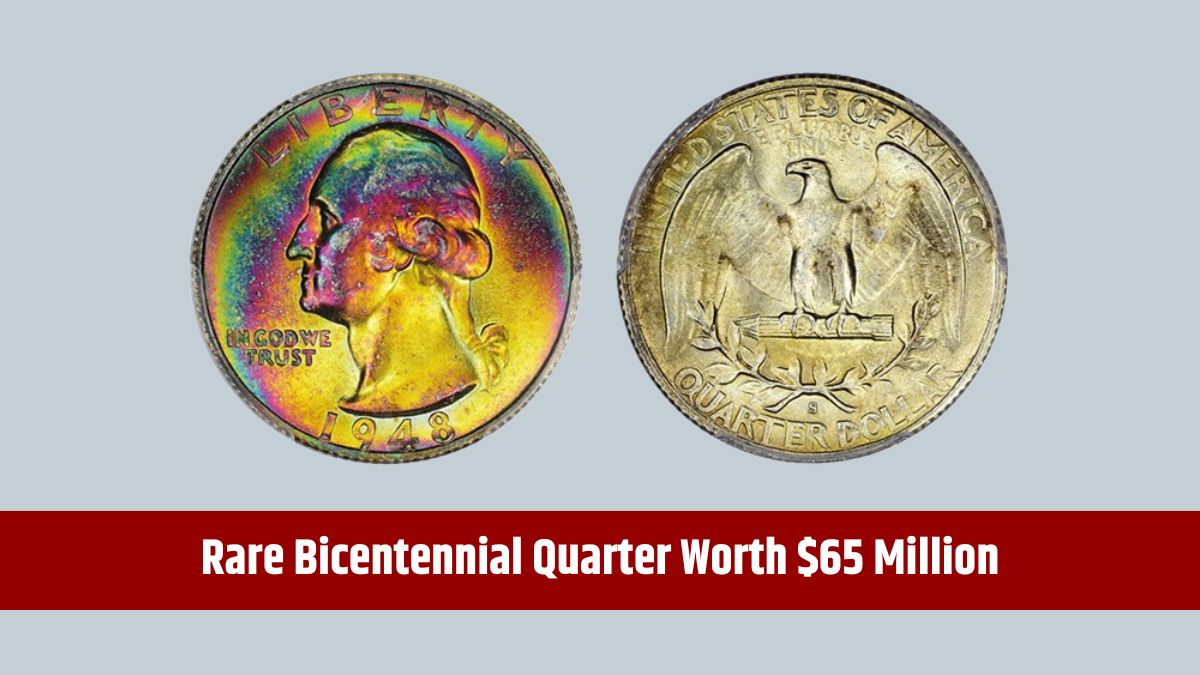Coin collecting often holds surprises, but few match the thrill of stumbling upon a Bicentennial Quarter worth a fortune. Released in 1976 to celebrate America’s 200th anniversary, the majority of these quarters are still in circulation and valued at their face worth of 25 cents. However, rare versions can command prices that are truly jaw-dropping. This article examines six of the most valuable Bicentennial Quarters, including one nearly worth $65 million and others each exceeding $25 million.
Bicentennial
The most astonishing story in the world of Bicentennial Quarters revolves around a single coin that fetched close to $65 million. Struck in 1976, this coin isn’t just any quarter. What sets it apart is the fact that it was minted on a 90% silver planchet, a material reserved for commemorative coins. Furthermore, it remains in near-mint condition, enhancing its desirability. Combined with its unique minting error, this quarter has become the holy grail of coin collectors, turning heads at auctions and making history along the way.
Double-Struck
Another impressive coin, valued at over $30 million, is the Double-Struck Quarter. This coin has a clear minting error where it was struck twice, creating a fascinating overlapping image. Such errors are not common and are incredibly sought after by collectors. With a rare story tied to its creation and its well-preserved condition, this quarter is more than a currency—it’s a piece of artwork and history wrapped in one.
Off-Center Silver
Coming in at around $28 million, the Off-Center Silver Quarter stands out due to its striking mistake. The coin was minted 15% off-center, a deviation that’s immediately noticeable. While errors can diminish value in some cases, in coin collecting, these “mistakes” often elevate a coin’s worth. Add to that the fact that this quarter was also struck on silver, and it becomes a highly coveted collector’s item, attracting massive bids at auctions.
Misprinted ‘No S’
The ‘No S’ Quarter, valued at approximately $27 million, owes its fame to a small but significant error. Minted at the San Francisco Mint, it should have featured an ‘S’ mint mark, but due to a production mishap, the mark was absent. Collectors cherish these kinds of minting errors, which make these coins rare pieces of numismatic history. Its limited run and unique error solidified its status as a valuable treasure in the coin collecting world.
Full-Step Tail
Valued at over $25 million, the Full-Step Tail Quarter is renowned for its impeccable detail. On this quarter, the steps on Philadelphia’s Independence Hall, depicted on the reverse side, are sharply and fully struck. This level of detail is often hard to find in circulated coins, as these areas tend to wear down quickly. The pristine condition of this quarter’s design elements makes it an exceptional rarity in any collection.
Rainbow Toned
Rounding out this list is the Rainbow Toned Quarter, valued at over $25 million. Unlike other rare quarters, its allure isn’t from a minting error but from the way it has naturally toned over time. The vibrant hues of blues, purples, and gold that have appeared on the surface add a unique aesthetic appeal to this already historic coin. Collectors value this phenomenon, not only for its rarity but also for the beauty it brings to a collection.
Coin collecting can sometimes feel like treasure hunting, and for a few lucky individuals, stumbling upon one of these rare quarters can lead to an incredible financial windfall. Each of these coins represents a combination of history, art, and a dash of luck, with their value fueled by minting errors, high-quality strikes, or extraordinary natural developments.
FAQs
What makes the $65 million Bicentennial Quarter so valuable?
It was struck on a 90% silver planchet and has a rare minting error.
Why is the Double-Struck Quarter worth $30 million?
It has a unique double-strike minting error that makes it rare.
How did the ‘No S’ Quarter get its name?
It lacks the ‘S’ mint mark due to a minting error at San Francisco.
What is special about the Full-Step Tail Quarter?
The steps on Independence Hall are fully struck, a rare feature.
What gives the Rainbow Toned Quarter its color?
It developed natural multi-colored toning from environmental disclosure.
